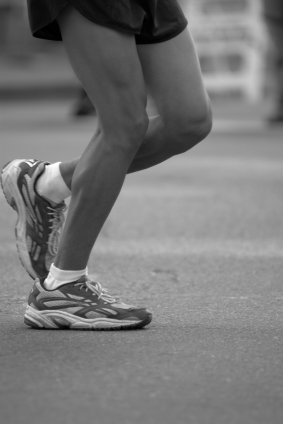CONGRATS ALL MINI MARATHON & GEIST HALF MARATHON PARTICIPANTS!
I stretch all the time but flexibility doesn't improve. What's the deal?
Stretching a healthy muscle will improve its flexibility. So if you're stretching and haven't increased in flexibility, you aren't stretching a healthy muscle. The question then shifts to - What's really wrong? The more fundamental question is - Why is the muscle tight? There are several reasons a muscle can be tight.
- Pain: If a structure in the body is painful, the brain will tell muscles to contract taking pressure off the painful structure.
- Nerve Entrapment: Nerves don't stretch; they floss around and through structures. Nerves can become 'glued' to surrounding tissue preventing normal ranges of motion.
- Adhesion / Scar Tissue: Adhesions prevent areas of muscle from stretching and contracting. This, of course, will limit muscle length.
- Trigger Point: A trigger point is an area of focal muscle spasm and does not relax with regular stretching methods.
A Successful Running Program
- Set your goals. Make a plan, review it frequently and stick with it!
- Find something enjoyable about each run. Respond immediately to any aches or pains.
- Make sure you are using the proper footware for your foot type.
- Increase the speed and distance of your runs slowly.
- Work on your flexibility (warm up/cool down).
- Do strength training for prevention and as part of your recovery (2-3 x/week).
- Cross train if injured or feeling over tired.
- Take rest days on a regular basis.
- Nutrition is very important: balanced meals and plenty of fluids.
- Consult the appropriate people for advice on training and injuries.
HOW TO RECOVER FASTER
Sore legs? An old injury resurfaced? Totally exhausted? There are things you can do to recover faster.
The most common complaint following a marathon run is delayed onset muscle soreness ( or DOMS ). The symptoms of DOMS are aching and tight muscles which come on 24-48 hours post exercise. The exact cause is unknown, however lactic acid, muscle strain, muscle spasm, connective tissue damage, enzymes and tissue fluid have all been possible theories suggested.
Hydration - in the first 24 hours it is important to sip cool carbohydrate and electrolyte replacement drinks
on a regular basis and consuming carbohydrate rich meals and snacks will help to replenish your
energy stores.
Rest - Relative rest is also an important concept in post marathon recovery. This means to relax and rest
without sitting still for hours! Moving around and gently stretching the muscles can be of great
importance in avoiding muscle stiffness. In the week following your marathon, try going for several
gentle walks, swim, or cycle.
Massage - very effective in decreasing muscle soreness following exhaustive exercise by circulating waste
products from muscles and relaxing them.
Training - returning to high intensity training can take up to 6 weeks for inexperienced marathoners. So don't
push yourself back too soon, just listen to your body and let it dictate when your ready.
ART- at Fall Creek Chiropractic, ART (active release technique) we provide a technique that will
enhance your recovery. It is a specific targeted technique to the tissue that is sore or injured as a
result of your activity. We provide this technique to not only speed recovery time but also to
enhance your overall performance. Dr. Wiggers is specialized in ART and will get you training
again for your next event.
Top 10 Running Form Tips
- Keep your shoulders, hips and ankles along one vertical line
- Have your support on/slightly behind the balls of your feet (don't put a lot of force through your heels on landing)
- Don't point or land on your toes either
- Use your chest as a speedometer (slightly forward for more speed)
- Keep your hands, shoulders and neck relaxed
- Make your support time short (pick up your foot quickly)
- After touchdown raise your ankle up under your hip by contracting your hamstrings briefly
- Keep your knees bent - don't completely straighten them on landing or push off
- Don't increase your stride length without increasing your stride frequency first
- Run with a stride frequency approaching 170-180 steps per minue regardless of running speed (right foot lands 45 times in 30 seconds)
Note: Everyone has a natural technique. If any of these tips cause excessive distress or soreness, please refrain. Try only one tip at a time as a focus for only part of a run. | 